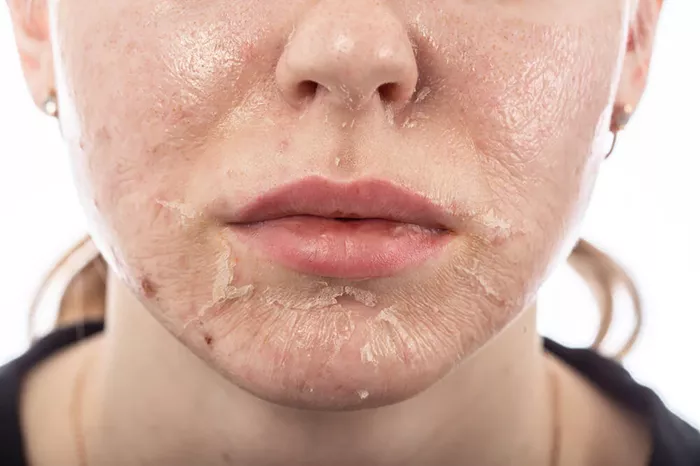Microdermabrasion is a popular skin treatment that helps improve the appearance and texture of the skin. Many people seek this procedure for its ability to address various skin concerns, such as fine lines, acne scars, and uneven skin tone. One common question that arises is whether patients will experience peeling after undergoing microdermabrasion. Understanding this aspect is crucial for those considering the treatment, as it can influence their expectations and post-treatment care. This article will delve into the specifics of microdermabrasion, its effects on the skin, and the likelihood of peeling occurring post-treatment.
What Is Microdermabrasion?
Microdermabrasion is a non-invasive cosmetic procedure that uses tiny crystals or a diamond-tipped wand to exfoliate the outer layer of skin. This process removes dead skin cells, revealing a fresher layer underneath. The treatment is typically performed in a dermatologist’s office or a medical spa. It is often sought for its minimal downtime and immediate results.
How Does Microdermabrasion Work?
During the procedure, a handheld device sprays microcrystals onto the skin’s surface. These crystals gently abrade the skin, while a vacuum mechanism removes the dead skin cells and debris. This dual action helps stimulate collagen production and improve blood circulation. The result is smoother, brighter skin with improved texture.
Benefits of Microdermabrasion
Microdermabrasion offers various benefits, making it a popular choice for many individuals:
Improved Skin Texture: The treatment helps smooth rough patches and reduce the appearance of scars.
Diminished Fine Lines: Regular sessions can help reduce the visibility of fine lines and wrinkles.
Brighter Complexion: Exfoliating the top layer of skin can enhance radiance and promote a more youthful appearance.
Acne Management: Microdermabrasion can help unclog pores and reduce acne breakouts.
Minimized Pore Appearance: The treatment can help shrink the size of enlarged pores.
See also: How do I get the best results from microdermabrasion?
What to Expect During and After Treatment
Before the Treatment
Before undergoing microdermabrasion, it is essential to consult with a qualified practitioner. They will assess your skin type and discuss your concerns. It is also crucial to avoid certain products or treatments, such as retinoids or chemical peels, for a few days prior.
During the Treatment
Microdermabrasion sessions typically last between 30 to 60 minutes, depending on the area being treated. The practitioner will cleanse your skin before starting the procedure. You may feel a slight scratching sensation, but it is generally not painful.
After the Treatment
Post-treatment, you may notice some redness, similar to a mild sunburn. This is a normal response and should subside within a few hours. The skin may feel sensitive, and it is vital to avoid sun exposure and harsh skincare products for a few days.
Do You Peel After Microdermabrasion?
The question of peeling after microdermabrasion is common. The answer can vary based on several factors, including the individual’s skin type, the depth of treatment, and post-care practices.
What Causes Peeling?
Peeling skin typically occurs when there is significant exfoliation or irritation. In the case of microdermabrasion, most people do not experience peeling as they would after a chemical peel. Microdermabrasion primarily removes the outermost layer of dead skin cells without affecting the deeper layers. As a result, the likelihood of peeling is minimal.
Factors That Influence Peeling
While most individuals will not experience significant peeling, certain factors can influence this outcome:
Skin Type: Individuals with sensitive or dry skin may experience slight peeling as their skin adjusts.
Depth of Treatment: More aggressive treatments may lead to minor flaking or peeling.
Post-Care Practices: Neglecting post-treatment care can increase the risk of irritation and peeling.
When Peeling Might Occur
In rare cases, some individuals may notice light peeling or flaking after microdermabrasion. This can happen if:
- The skin was particularly dehydrated or compromised before treatment.
- An aggressive technique was used during the procedure.
- The individual has sensitive skin that reacts more strongly to exfoliation.
Caring for Your Skin After Microdermabrasion
Immediate Aftercare
After microdermabrasion, your skin will be more sensitive than usual. To care for it properly:
Avoid Sun Exposure: Protect your skin from UV rays for at least a week.
Use Gentle Products: Stick to mild cleansers and avoid exfoliants for several days.
Moisturize: Keep the skin hydrated with a gentle, fragrance-free moisturizer.
Long-Term Care
To maintain the results of microdermabrasion and prevent any adverse reactions, consider these long-term care tips:
Regular Treatments: Schedule microdermabrasion sessions every few weeks for optimal results.
Healthy Lifestyle: Maintain a balanced diet and stay hydrated to support skin health.
Sunscreen Use: Apply a broad-spectrum sunscreen daily to protect against sun damage.
Conclusion
In conclusion, microdermabrasion is an effective treatment for improving skin texture and addressing various concerns. While peeling is generally not a common occurrence after the procedure, some individuals may experience slight flaking depending on their skin type and treatment depth. Understanding the nuances of microdermabrasion can help you manage your expectations and prepare for the aftercare needed to maintain healthy, radiant skin. If you are considering microdermabrasion, consult with a qualified practitioner to determine if this treatment is right for you and to discuss any specific concerns you may have regarding peeling or skin care.
Related topic:
11 Best At-Home Microdermabrasion Kits of 2024
Can I Exfoliate After Microdermabrasion?
Should I Moisturize After Microdermabrasion?

